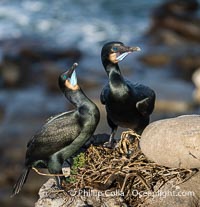
Mated pair of Brandt's Cormorants tend to the nest they have built on sea cliffs. Note the colors they assume during mating season: striking blue gular pouch (throat) along with faint blue-green iridescence in their plumage.
Species: Brandt's cormorant, Phalacrocorax penicillatus
Location: La Jolla, California
Image ID: 40130
Species: Brandt's cormorant, Phalacrocorax penicillatus
Location: La Jolla, California
Image ID: 40130
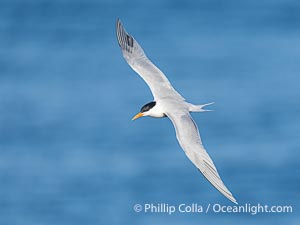
Royal Tern in flight, adult breeding plumage with black head cap.
Species: Royal Tern, Sterna maxima, Thalasseus maximus
Location: La Jolla, California
Image ID: 40241
Species: Royal Tern, Sterna maxima, Thalasseus maximus
Location: La Jolla, California
Image ID: 40241
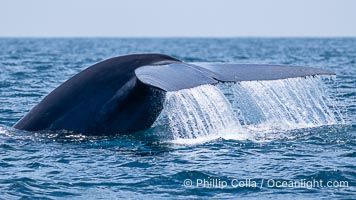
Blue whale, raising fluke prior to diving for food, fluking up, lifting tail as it swims in the open ocean foraging for food.
Species: Blue whale, Balaenoptera musculus
Location: San Diego, California
Image ID: 40608
Species: Blue whale, Balaenoptera musculus
Location: San Diego, California
Image ID: 40608
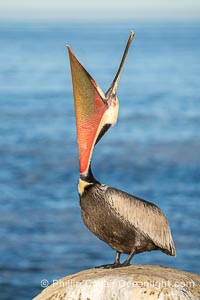
A Perfect Brown Pelican Head Throw with Distant Ocean in Background, bending over backwards, stretching its neck and gular pouch. Note the winter breeding plumage, yellow head, red and olive throat, pink skin around the eye, brown hind neck with some white neck side detail, gray breast and body.
Species: Brown Pelican, Pelecanus occidentalis, Pelecanus occidentalis californicus
Location: La Jolla, California
Image ID: 40794
Species: Brown Pelican, Pelecanus occidentalis, Pelecanus occidentalis californicus
Location: La Jolla, California
Image ID: 40794
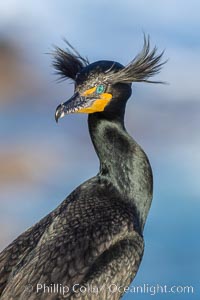
Double-crested cormorant nuptial crests, tufts of feathers on each side of the head, plumage associated with courtship and mating.
Species: Double-crested cormorant, Phalacrocorax auritus
Location: La Jolla, California
Image ID: 36848
Species: Double-crested cormorant, Phalacrocorax auritus
Location: La Jolla, California
Image ID: 36848
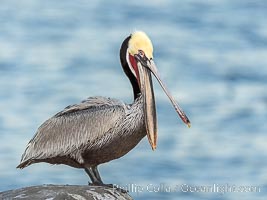
California Brown Pelican claps its jaws, sometimes rapidly several times, perhaps to dislodge debris or simply because its fun and feels good. This is not the same as the "yawn" that precedes a head throw. Adult winter breeding plumage with brown hind-neck.
Species: Brown Pelican, Pelecanus occidentalis, Pelecanus occidentalis californicus
Location: La Jolla, California
Image ID: 38590
Species: Brown Pelican, Pelecanus occidentalis, Pelecanus occidentalis californicus
Location: La Jolla, California
Image ID: 38590
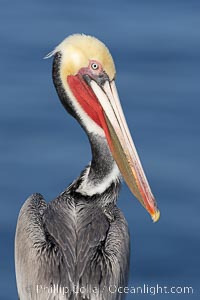
Adult California brown pelican in transition from non-breeding to breeding winter plumage. Note the brown hind neck of a breeding brown pelican is just filling in. This pelican already displays the red and olive throat and white and yellow head feathers of an adult winter brown pelican.
Species: Brown Pelican, Pelecanus occidentalis, Pelecanus occidentalis californicus
Location: La Jolla, California
Image ID: 38679
Species: Brown Pelican, Pelecanus occidentalis, Pelecanus occidentalis californicus
Location: La Jolla, California
Image ID: 38679
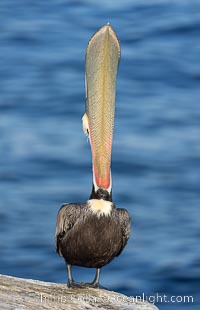
Spectacular Brown Pelican Head Throw Display. This California brown pelican extends its head and bill up and back, stretching its neck and pouch in a behavior known as a head throw or bill throw. Adult winter breeding plumage. Pelican yoga, High Mountain pose, Tadasan.
Species: Brown Pelican, Pelecanus occidentalis, Pelecanus occidentalis californicus
Location: La Jolla, California
Image ID: 38691
Species: Brown Pelican, Pelecanus occidentalis, Pelecanus occidentalis californicus
Location: La Jolla, California
Image ID: 38691
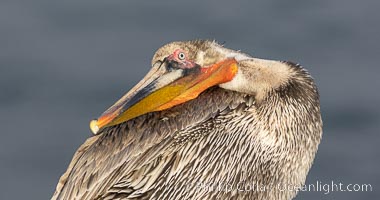
Marichyasana, sage twist pose, pelican yoga. Brown pelican doing yoga, actually its preening, bending its neck back to spread preen oil on the back of the head and neck, likely second winter coloration.
Species: Brown Pelican, Pelecanus occidentalis, Pelecanus occidentalis californicus
Location: La Jolla, California
Image ID: 38805
Species: Brown Pelican, Pelecanus occidentalis, Pelecanus occidentalis californicus
Location: La Jolla, California
Image ID: 38805
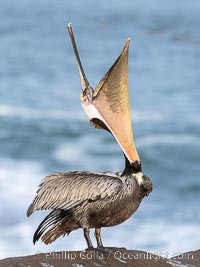
A perfect Brown Pelican Head Throw with Distant Ocean in Background, bending over backwards, stretching its neck and gular pouch, winter adult breeding plumage coloration.
Species: Brown Pelican, Pelecanus occidentalis, Pelecanus occidentalis californicus
Location: La Jolla, California
Image ID: 38879
Species: Brown Pelican, Pelecanus occidentalis, Pelecanus occidentalis californicus
Location: La Jolla, California
Image ID: 38879
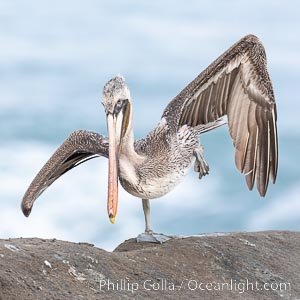
Young brown pelican performing yoga Warrior Three or Half Moon Pose Virabhadrasana, on one leg with wings raised and head tipped forward. Possible second or third year winter plumage, immature.
Species: Brown Pelican, Pelecanus occidentalis, Pelecanus occidentalis californicus
Location: La Jolla, California
Image ID: 38881
Species: Brown Pelican, Pelecanus occidentalis, Pelecanus occidentalis californicus
Location: La Jolla, California
Image ID: 38881
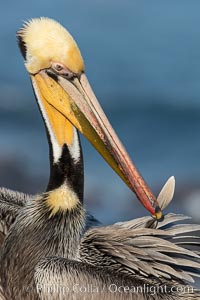
Yellow morph California brown pelican preening, cleaning its feathers after foraging on the ocean, with distinctive winter breeding plumage with distinctive dark brown nape, yellow head feathers. Note the unusual yellow gular throat pouch.
Species: Brown Pelican, Pelecanus occidentalis, Pelecanus occidentalis californicus
Location: La Jolla, California
Image ID: 36681
Species: Brown Pelican, Pelecanus occidentalis, Pelecanus occidentalis californicus
Location: La Jolla, California
Image ID: 36681
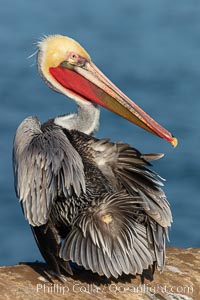
A brown pelican preening, uropygial gland (preen gland) visible near the base of its tail. Preen oil from the uropygial gland is spread by the pelican's beak and back of its head to all other feathers on the pelican, helping to keep them water resistant and dry. Note adult winter breeding plumage in display, with brown neck, red gular throat pouch and yellow and white head. This adult is just transitioning to the brown hind neck that characterizes breeding brown pelicans.
Species: Brown Pelican, Pelecanus occidentalis, Pelecanus occidentalis californicus
Location: La Jolla, California
Image ID: 36682
Species: Brown Pelican, Pelecanus occidentalis, Pelecanus occidentalis californicus
Location: La Jolla, California
Image ID: 36682
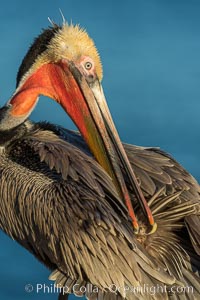
A brown pelican preening, reaching with its beak to the uropygial gland (preen gland) near the base of its tail. Preen oil from the uropygial gland is spread by the pelican's beak and back of its head to all other feathers on the pelican, helping to keep them water resistant and dry.
Species: Brown Pelican, Pelecanus occidentalis, Pelecanus occidentalis californicus
Location: La Jolla, California
Image ID: 30289
Species: Brown Pelican, Pelecanus occidentalis, Pelecanus occidentalis californicus
Location: La Jolla, California
Image ID: 30289
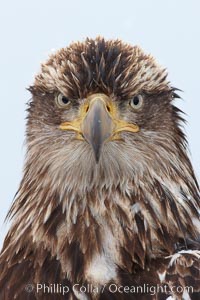
Juvenile bald eagle, second year coloration plumage, closeup of head and shoulders, looking directly at camera, snowflakes visible on feathers. Immature coloration showing white speckling on feathers.
Species: Bald eagle, Haliaeetus leucocephalus, Haliaeetus leucocephalus washingtoniensis
Location: Kachemak Bay, Homer, Alaska
Image ID: 22589
Species: Bald eagle, Haliaeetus leucocephalus, Haliaeetus leucocephalus washingtoniensis
Location: Kachemak Bay, Homer, Alaska
Image ID: 22589
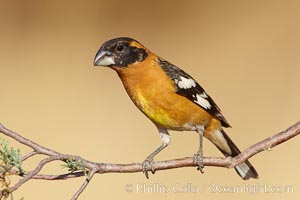
Black-headed grosbeak, male.
Species: Black-headed grosbeak, Pheucticus melanocephalus
Location: Madera Canyon Recreation Area, Green Valley, Arizona
Image ID: 22911
Species: Black-headed grosbeak, Pheucticus melanocephalus
Location: Madera Canyon Recreation Area, Green Valley, Arizona
Image ID: 22911
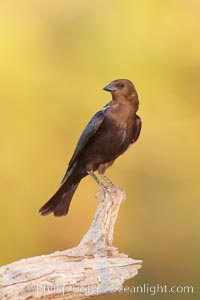
Brown-headed cowbird, male.
Species: Brown-headed cowbird, Molothrus ater
Location: Amado, Arizona
Image ID: 22916
Species: Brown-headed cowbird, Molothrus ater
Location: Amado, Arizona
Image ID: 22916
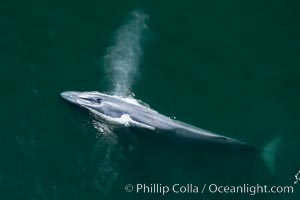
Blue whale, exhaling as it surfaces from a dive, aerial photo. The blue whale is the largest animal ever to have lived on Earth, exceeding 100' in length and 200 tons in weight.
Species: Blue whale, Balaenoptera musculus
Location: Redondo Beach, California
Image ID: 25951
Species: Blue whale, Balaenoptera musculus
Location: Redondo Beach, California
Image ID: 25951
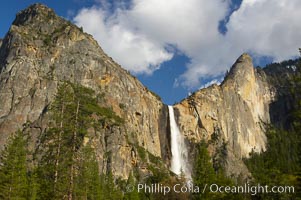
Bridalveil Falls at sunset, with clouds and blue sky in the background. Bridalveil Falls in Yosemite drops 620 feet (188 m) from a hanging valley to the floor of Yosemite Valley.
Location: Bridalveil Falls, Yosemite National Park, California
Image ID: 12646
Location: Bridalveil Falls, Yosemite National Park, California
Image ID: 12646
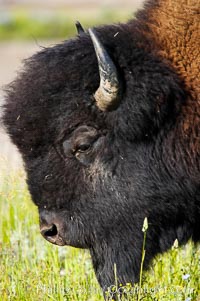
The bisons massive head is its most characteristic feature. Its forehead bulges because of its convex-shaped frontal bone. Its shoulder hump, dwindling bowlike to the haunches, is supported by unusually long spinal vertebrae. Over powerful neck and shoulder muscles grows a great shaggy coat of curly brown fur, and over the head, like an immense hood, grows a shock of black hair. Its forequarters are higher and much heavier than its haunches. A mature bull stands about 6 1/2 feet (2 meters) at the shoulder and weighs more than 2,000 pounds (900 kilograms). The bisons horns are short and black. In the male they are thick at the base and taper abruptly to sharp points as they curve outward and upward; the females horns are more slender.
Species: American bison, Bison bison
Location: Yellowstone National Park, Wyoming
Image ID: 13120
Species: American bison, Bison bison
Location: Yellowstone National Park, Wyoming
Image ID: 13120
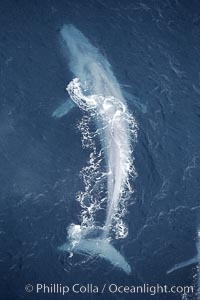
Blue whale. The entire body of a huge blue whale is seen in this image, illustrating its hydronamic and efficient shape.
Species: Blue whale, Balaenoptera musculus
Location: La Jolla, California
Image ID: 21251
Species: Blue whale, Balaenoptera musculus
Location: La Jolla, California
Image ID: 21251
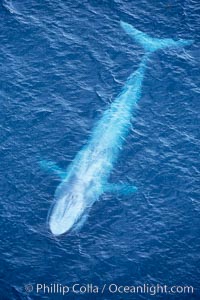
Blue whale. The entire body of a huge blue whale is seen in this image, illustrating its hydronamic and efficient shape.
Species: Blue whale, Balaenoptera musculus
Location: La Jolla, California
Image ID: 21252
Species: Blue whale, Balaenoptera musculus
Location: La Jolla, California
Image ID: 21252
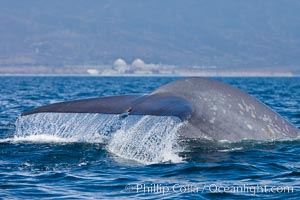
Blue whale and San Onofre Nuclear Power generating station, raising fluke prior to diving for food, fluking up, lifting its tail as it swims in the open ocean foraging for food.
Species: Blue whale, Balaenoptera musculus
Location: Dana Point, California
Image ID: 27337
Species: Blue whale, Balaenoptera musculus
Location: Dana Point, California
Image ID: 27337
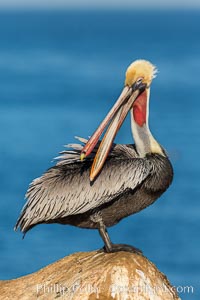
Brown pelican portrait, displaying winter non-breeding plumage with distinctive yellow head feathers and red gular throat pouch but white hind neck.
Species: Brown Pelican, Pelecanus occidentalis, Pelecanus occidentalis californicus
Location: La Jolla, California
Image ID: 28332
Species: Brown Pelican, Pelecanus occidentalis, Pelecanus occidentalis californicus
Location: La Jolla, California
Image ID: 28332
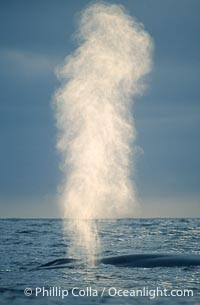
A blue whale spouts at sunset. The blow, or spout, of a blue whale can reach 30 feet into the air. The blue whale is the largest animal ever to live on earth.
Species: Blue whale, Balaenoptera musculus
Image ID: 02217
Species: Blue whale, Balaenoptera musculus
Image ID: 02217
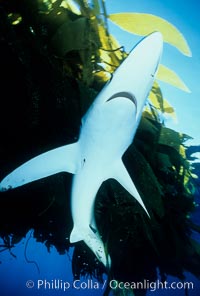
Blue shark searching drift kelp for food, open ocean.
Species: Blue shark, Prionace glauca
Location: San Diego, California
Image ID: 02288
Species: Blue shark, Prionace glauca
Location: San Diego, California
Image ID: 02288
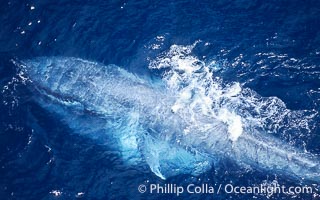
A blue whale eating krill. This blue whale is seen feeding and surfacing amid krill with its throat fully engorged with krill and water. It will push the water back out with its tongue, trapping the krill in its baleen which acts like a filter. Aerial photo, Baja California.
Species: Blue whale, Balaenoptera musculus
Image ID: 05837
Species: Blue whale, Balaenoptera musculus
Image ID: 05837
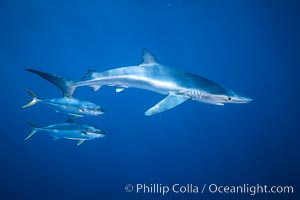
Blue shark and yellowtail in the open ocean.
Species: North pacific yellowtail, Yellowtail, Kingfish, Prionace glauca, Seriola lalandi
Location: San Diego, California
Image ID: 01000
Species: North pacific yellowtail, Yellowtail, Kingfish, Prionace glauca, Seriola lalandi
Location: San Diego, California
Image ID: 01000
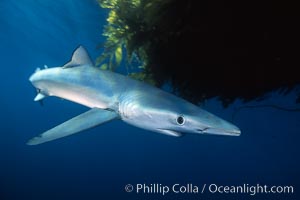
Blue shark and offshore drift kelp paddy, open ocean.
Species: Blue shark, Macrocystis pyrifera, Prionace glauca
Location: San Diego, California
Image ID: 01078
Species: Blue shark, Macrocystis pyrifera, Prionace glauca
Location: San Diego, California
Image ID: 01078
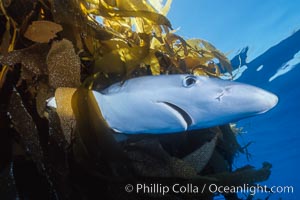
Blue shark and offshore drift kelp paddy, open ocean.
Species: Blue shark, Macrocystis pyrifera, Prionace glauca
Location: San Diego, California
Image ID: 01081
Species: Blue shark, Macrocystis pyrifera, Prionace glauca
Location: San Diego, California
Image ID: 01081